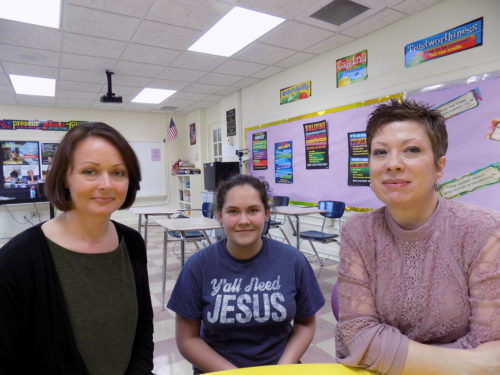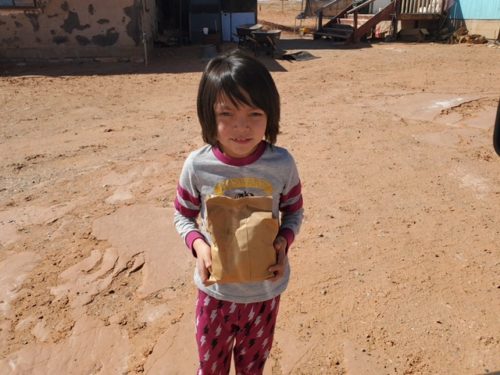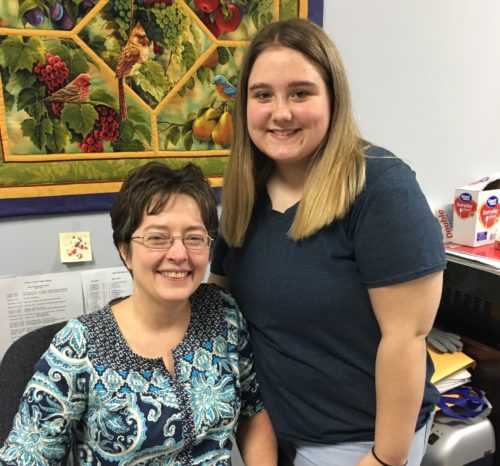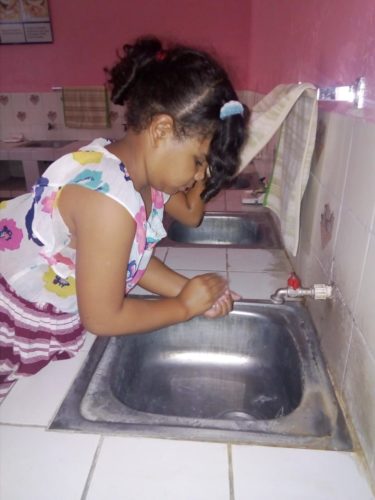*Note: This blog was written prior to the COVID-19 pandemic. Although much has changed regarding our sponsored children’s learning experience in the past months, our On the Road stories remain relevant in regards to our volunteer coordinator’s work and the impact of sponsorship on children in our program thanks to our sponsors. We are pleased to continue to share stories with you about our work.
***
Letcher County is located in the southeastern corner of Kentucky and shares a border with Wise County, Virginia.
“Letcher County is very beautiful. On its eastern border runs a vast tract of the Jefferson National Forest, which is shared with Virginia,” explained our Director of U.S. Programs, Renée Kube.
Jenkins Independent School is a long-established project with Children Incorporated, and our sponsorship programs are much needed and appreciated by the students.
“A point of pride in the county is Pine Mountain. It’s the second-highest mountain in Kentucky and is also an exceptionally long mountain whose ridge runs about 100 miles from just below the West Virginia line south through the Kentucky-Virginia border to Tennessee, including the entire length of Letcher County.”
“The county is trying hard to develop the tourist industry by promoting the scenic beauty to be enjoyed in its trails and parks. These include the Pine Mountain State Scenic Trail, Bad Branch Falls, and the Pioneer Horse Trail,” said Renée.
The need for tourists
The reason the county is working so diligently to promote tourism is due to the collapse of the coal industry. There used to be dozens of coal camps in Letcher County, each employing an average of 30 to 300 men who lived in the camps with their families. However, with the rise of automation, coal extraction and processing could be done with a significantly reduced number of workers. This was devastating for the families, and also devastating for communities that lost the tax base for their schools and community services.
“Letcher County has formally asked the U.S. government to construct a federal penitentiary on the site of an abandoned mountain top strip mine. Letcher County Judge-Executive, Jim Ward, was interviewed by NBC News about the prospective prison. He said the economic situation is desperate in Letcher County. He has talked to residents who have lost their jobs and homes. He has talked with parents who see no hope for their children to be successful if they grow up and stay in the county. He said residents are willing to try or do almost anything to save their rural way of life,” said Renée.
Running programs to help children in need

The front view of Jenkins High School
Jenkins Independent School is a long-established project with Children Incorporated, and our sponsorship program is much needed and appreciated by the students. The school serves students in seventh through twelfth grade in a two-story building comprising twenty classrooms, two computer labs, a cafeteria, a gymnasium, an art room, a band/music room, a library, a guidance office, and four special education rooms.
Our volunteer coordinator, Angie, is an experienced coordinator who works tirelessly to bring resources for her students. She runs a Backpack Feeding Program for those who struggle to cope with food insecurity. She maintains clothing and supply closets, and she is always reaching out for more donations within the small community to further help children and their families.
Angie’s “Back to School Bash” is one of the key programs that she hosts every year, where she brings in informational booths to set-up on the school’s softball field, giving parents and children a chance to learn about any number of services the school and the community offers.
During a visit to the school last year, Renée had the chance to hear more about the programs Angie runs within the school. Then, Angie brought in a couple of students to her office for Renée to meet.
Angie’s “Back to School Bash” is one of the key programs that she hosts every year, where she brings in informational booths to set-up on the school’s softball field, giving parents and children a chance to learn about any number of services the school and the community offers.
Much-needed support for kids in need
Brian* is a sweet and rather shy seventh-grader. In school, he likes math, music, and playing baseball. Brian is not sure about his future plans, but he is interested in becoming a firefighter or maybe a construction worker.
“After he returned to class, Angie told me that Brian’s father had died unexpectedly, and his mother has struggled with raising him as a single parent. Angie was so grateful that Brian had the support of his sponsor because she knew he needed the help,” said Renée.
Next, Renée met Julia.* When Julia joined our sponsorship program in 2011, when she was in elementary school, she was matched with a sponsor who is still supporting her today. Even though Julia has moved multiple times over the years, Angie always made sure she still stayed connected with her sponsor.
“Julia told me that her sponsors feel like grandparents to her. She is grateful for their financial help, and just as appreciative for the emotional support. They sent packages, additional money gifts, and letters that are precious to Julia,” said Renée.
*Names changed to protect the children.
***
How do I sponsor a child in Kentucky?
You can sponsor a child in Kentucky in one of two ways: call our office at 1-800-538-5381 and speak with one of our staff members or email us at sponsorship@children-inc.org.



 Children Incorporated has been battling food insecurity and hunger since the inception of our organization in 1964. Providing families and children with access to food has been an essential part of what we do through both our child sponsorship program and various other means including our International Feeding Program. Over the last five decades, we have provided food to hungry children through our support of backpack feeding programs, the establishment and support of food banks, through financing community gardens, and even by providing livestock to families in rural areas. Witnessing the joy and appreciation the parents express as they receive nutritious food to feed their hungry children only motivates us to do more.
Children Incorporated has been battling food insecurity and hunger since the inception of our organization in 1964. Providing families and children with access to food has been an essential part of what we do through both our child sponsorship program and various other means including our International Feeding Program. Over the last five decades, we have provided food to hungry children through our support of backpack feeding programs, the establishment and support of food banks, through financing community gardens, and even by providing livestock to families in rural areas. Witnessing the joy and appreciation the parents express as they receive nutritious food to feed their hungry children only motivates us to do more.
